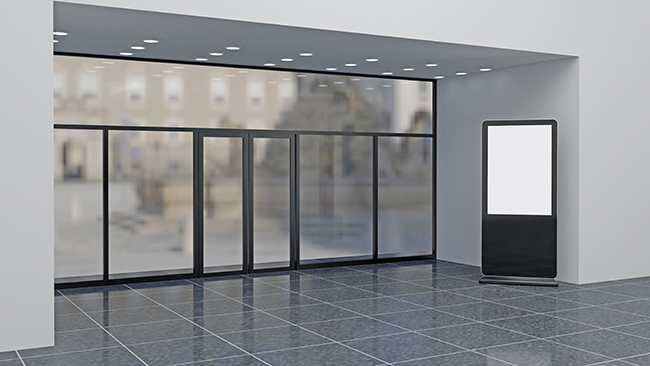A digital signage kiosk can be anything from a photo-booth looking contraption to a free-standing double-sided sign in the middle of a mall. It can be an ordering and payment device used in restaurants or a multi-functional interactive map used in malls and shopping centers.
The Features of Digital Signs
At this point in history, you could say there is nothing they can’t do, and it wouldn’t be 100% hyperbole. The fact is that companies and people are finding ingenious ways to use their digital signs. As a result, there are numerous features to be enjoyed.
If you are talking simply in terms of attachments and such, then you can get an attachment that allows people to pay you by card payments. You can also have people pay you to wireless using scanning software and online Smartphone wallets. You use QR codes on your screens that people can scan, and you can use motion tracking hardware. There are light sensors that can activate your signs, there are motion sensors that activate when people walk past your signs. There are also energy saving features, solar panels you can attach, and you can buy protective covers that keep your digital signs running even if there is a thunderstorm outside.
You can connect up several signs so that it shows a number of different signs as a single image, and there are now curved signs that allow for an image that looks more fully rendered and impactful. There are lights and speakers you can add to your digital signs, and you can sync up several signs so that images move from one sign to another as if they are bounding around a room. There are even some signs that create the illusion of a 3D image on what appears to be a 2D surface.
Use Cases
As they say in America, throw a rock and you will hit three. As mentioned already, people are finding such brilliant and ingenious ways to use digital signs that the number of use cases is skyrocketing.
The most common use cases are for promoting items, products, services, and sales. As you know, people are drawn to moving objects, so when they see a digital sign showing a moving image, people are drawn to it. The 2020 lockdowns prompted a lot of companies to instigate contact-free protocols where digital signs were put to great use. People were directed to the tills, toilets, and waiting rooms using digital signs. They even used digital signs to tell people how many were in the store so that people could wait outside.
We have seen restaurants using digital signs as menus, and malls using them to direct people around their local area with interactive maps. There are large events where people are shepherded around the place using digital signs, which allows them to efficiently funnel people into the event and then out of the event when it is over.
Software Solutions?
Perhaps the most obvious software solution is the Kitcast system. It is easy to integrate Kitcast into most Smart TVs and digital signs, it works with most streaming devices, and it can be used on Smartphones, laptops, tablets, and PCs. It works to help people create content, schedule, and stream content onto a variety of screens. There are more and more software solutions being released monthly now that digital signs are so popular, but Kitcast has been around the longest, so is unlikely to disappear tomorrow (like so many others have done).
As with all things, the hardware and software may be sophisticated and efficient, but it is how you use it that matters. Start small and start simply, and then work with what works and discard what doesn’t. Over time and with several successes under your belt, you will learn how to best capitalize on your digital signs to get the most out of them that you can.




Leave a comment
Have something to say about this article? Add your comment and start the discussion.